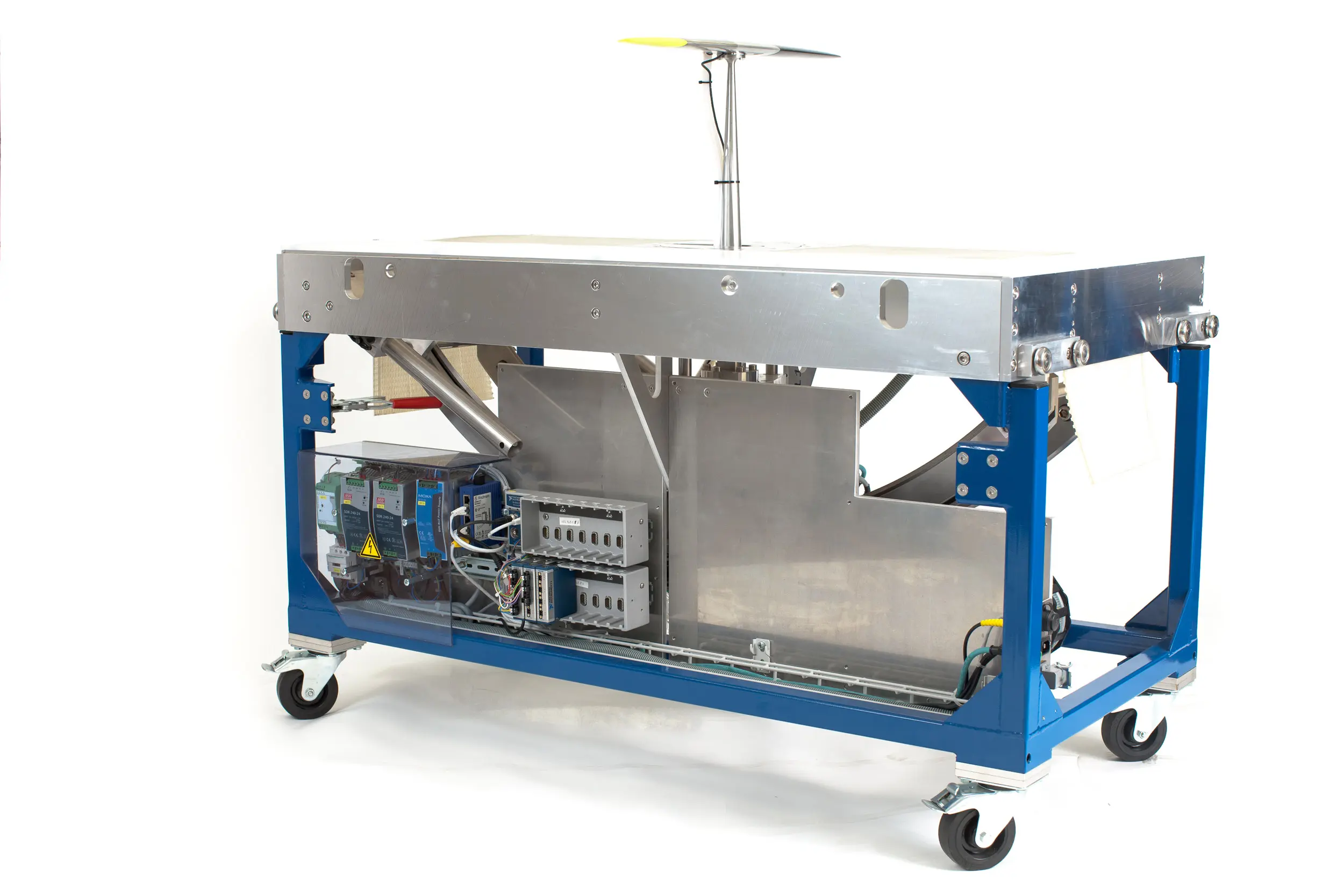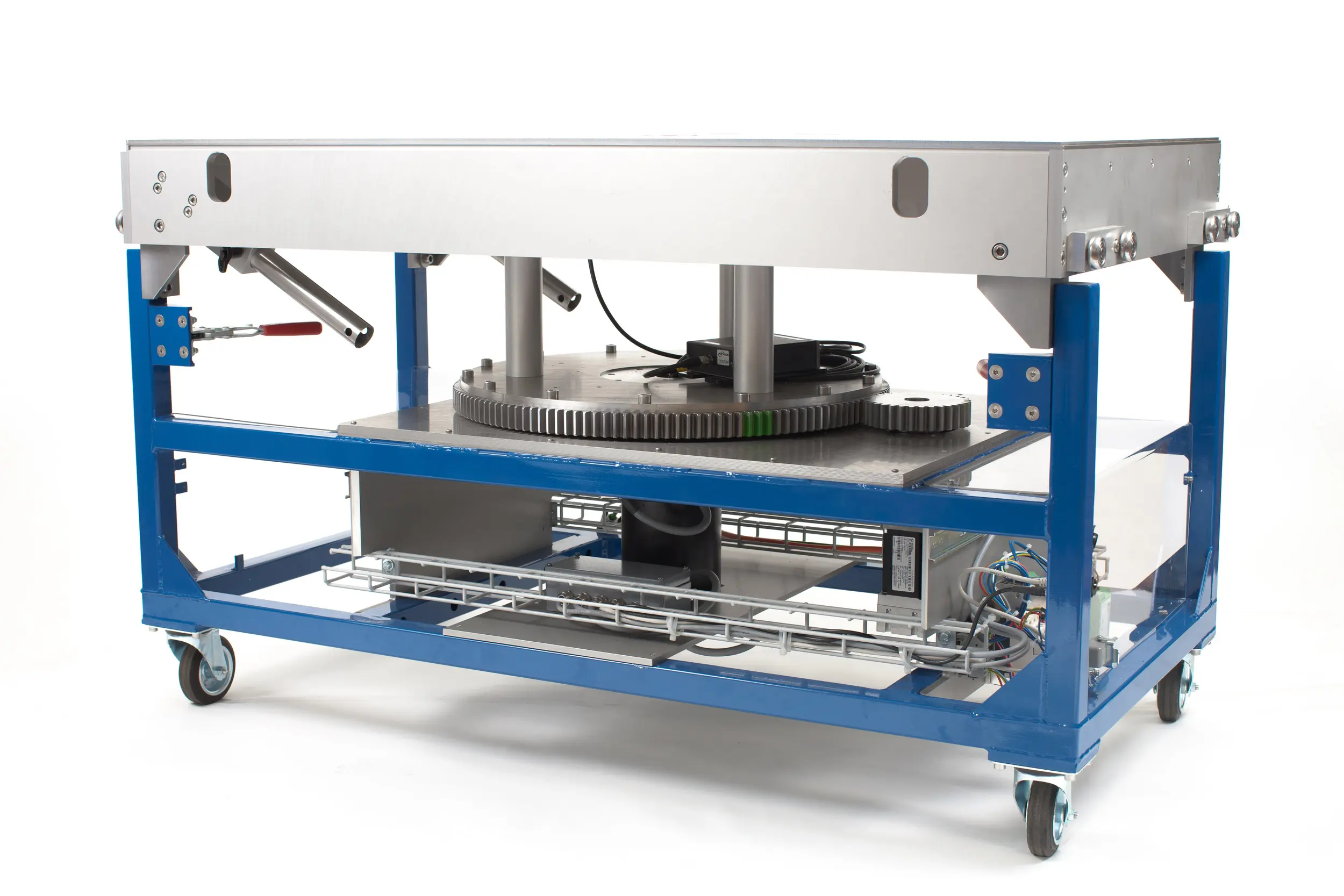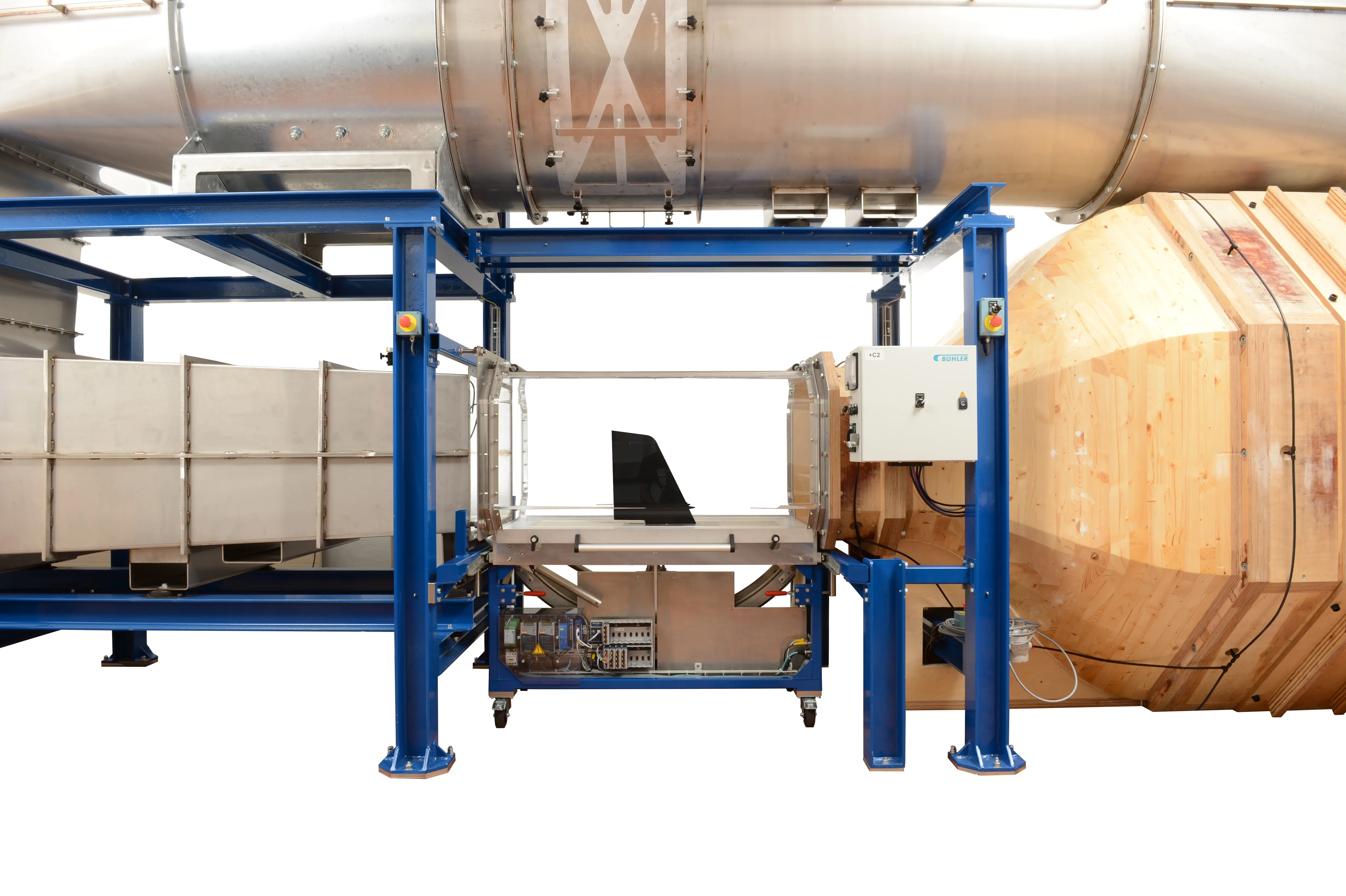ALFA Laboratory
Laboratory Description
ALFA, the aerodynamics research and didactics facility of the Centre for Aviation is a low speed wind tunnel designed to test the aerodynamic characteristics of models in exactly controlled conditions. In its test section, which is 1.2 m long, 0.9 m wide and 0.6 m high, airspeeds between 5 and 50 m/s can be achieved.
Technical Data
- Wind tunnel dimensions: length: 8m, width 2.1m, height 3.5m
- Test section size: length 1.2m, width 0.9m, height 0.6m
- Test trolley concept: two interchangeable test trolleys, one of which is equipped with a model sting controllable in pitch and yaw, while the other is equipped with a rotary table for universal use
- Motor power: 55kW
- Airflow speed in the test section: 5 bis 50m/s
- Maximum data sampling rate: 20kHz
- Measuring equipment: integrated traversing system for wake measurements, various six component strain gauge balances, two 32 port pressure scan systems, single wire and 3-D constant temperature anemometer (CTA) system
- Flow visualisation: mini-tufts, smoke filament, laser sheet
Applications
The ALFA facility is used for research, didactics and industry services. It is also possible for external parties to rent the wind tunnel; the centre for aviation offers a wide spectrum of services, from simply operating the tunnel to assuming complete responsibility for a measurement project.
Didactic elliptic wing model
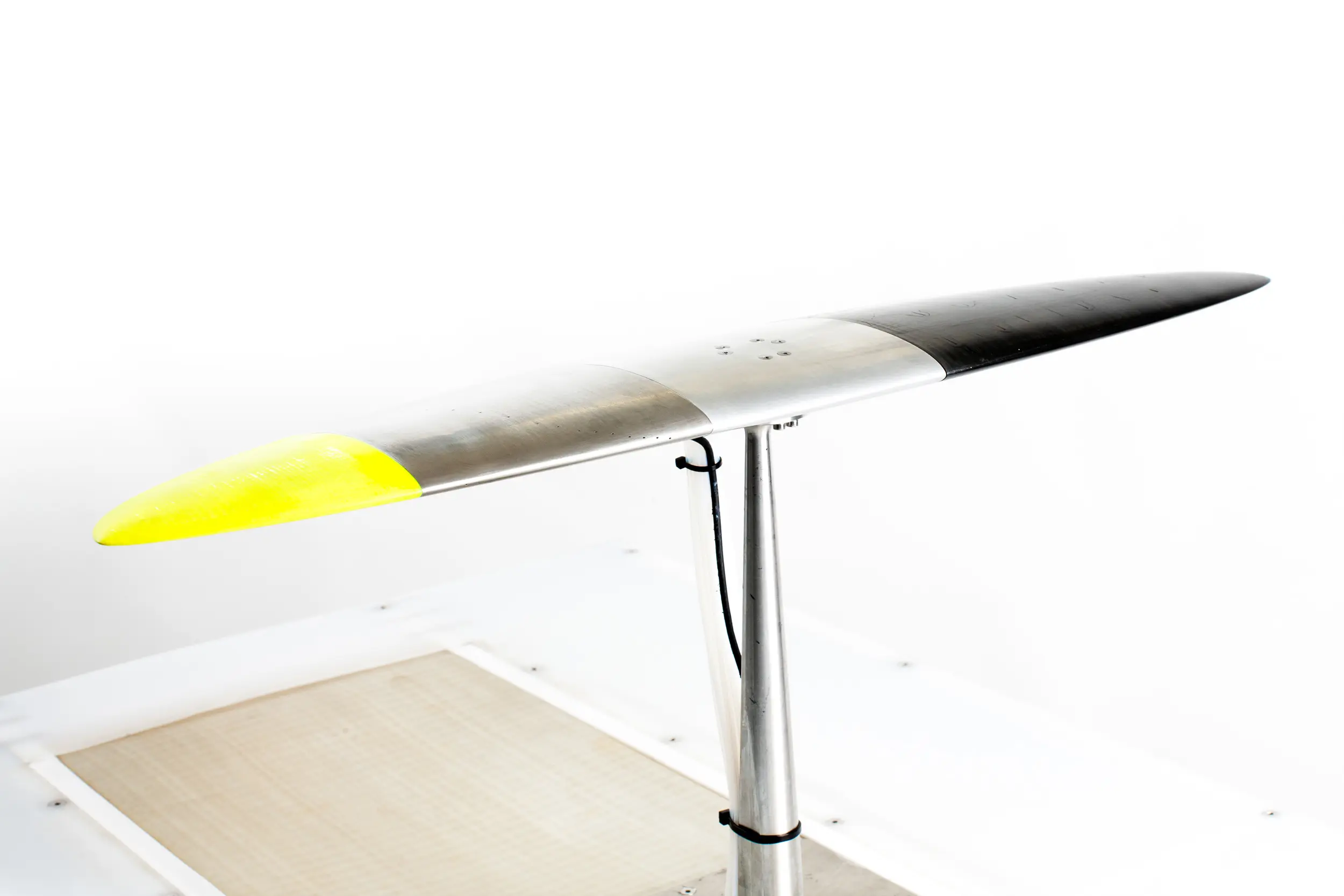
An elliptic wing model is used in laboratory exercises and student projects in the NEA (Numerical and Experimental Aerodynamics) course, which is offered to Aviation and Mechanical Engineering students. The students can measure aerodynamic forces and moments and pressure distributions over the wing as a function of angle of attack and of sideslip and gain a basic understanding of the principles of wind tunnel testing.
Student project: rudder hinge moment measurement
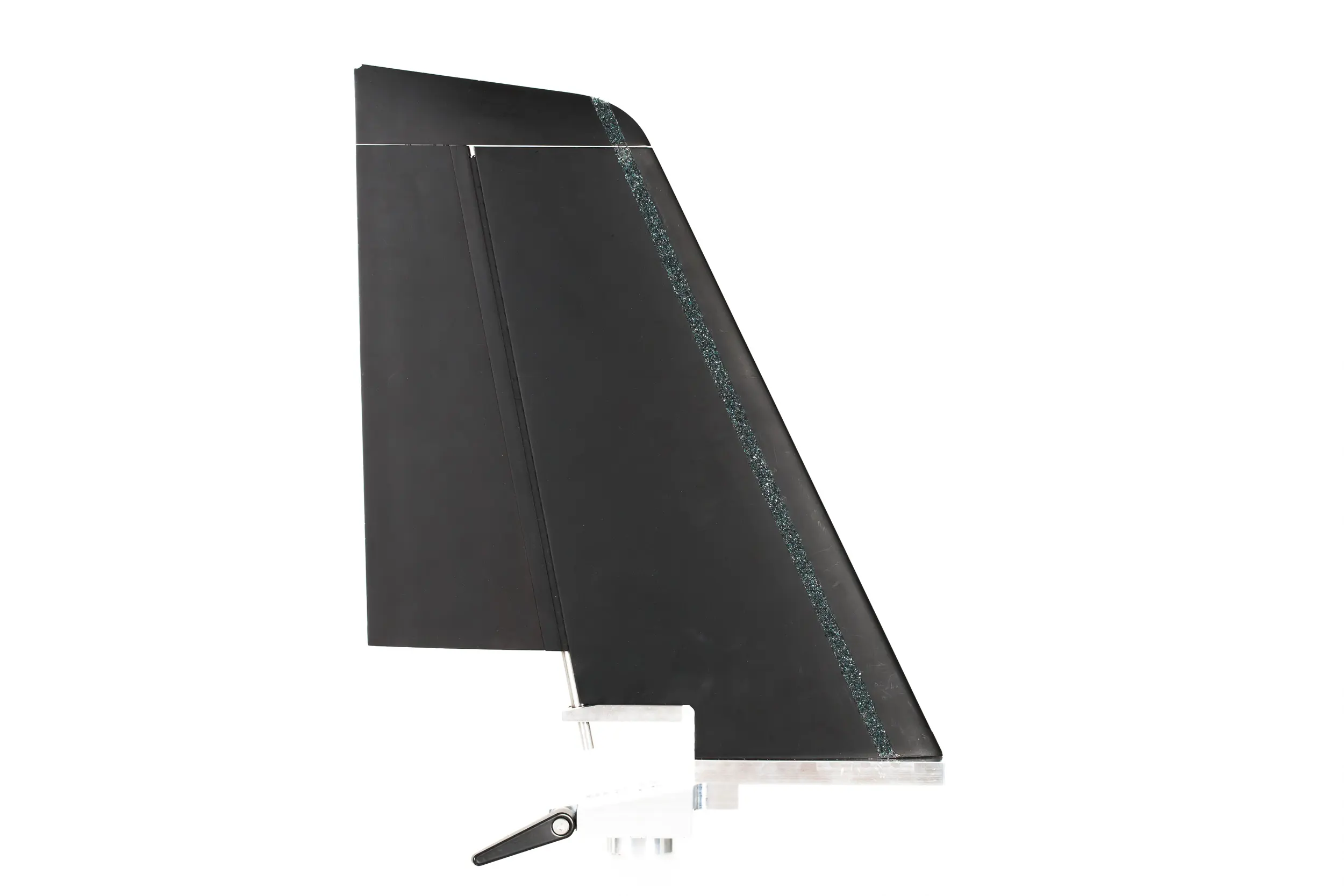
Student: Felix Rubin
Supervisors: Prof. Leonardo Manfriani, Dr. Marcello Righi
Scope of this project was to measure the hinge moments of an aircraft rudder as a function of rudder deflection and of sideslip angle. A wind tunnel model representing the vertical tail of a trainer aircraft was designed and built to this purpose; the data served to validate a CFD simulation.

